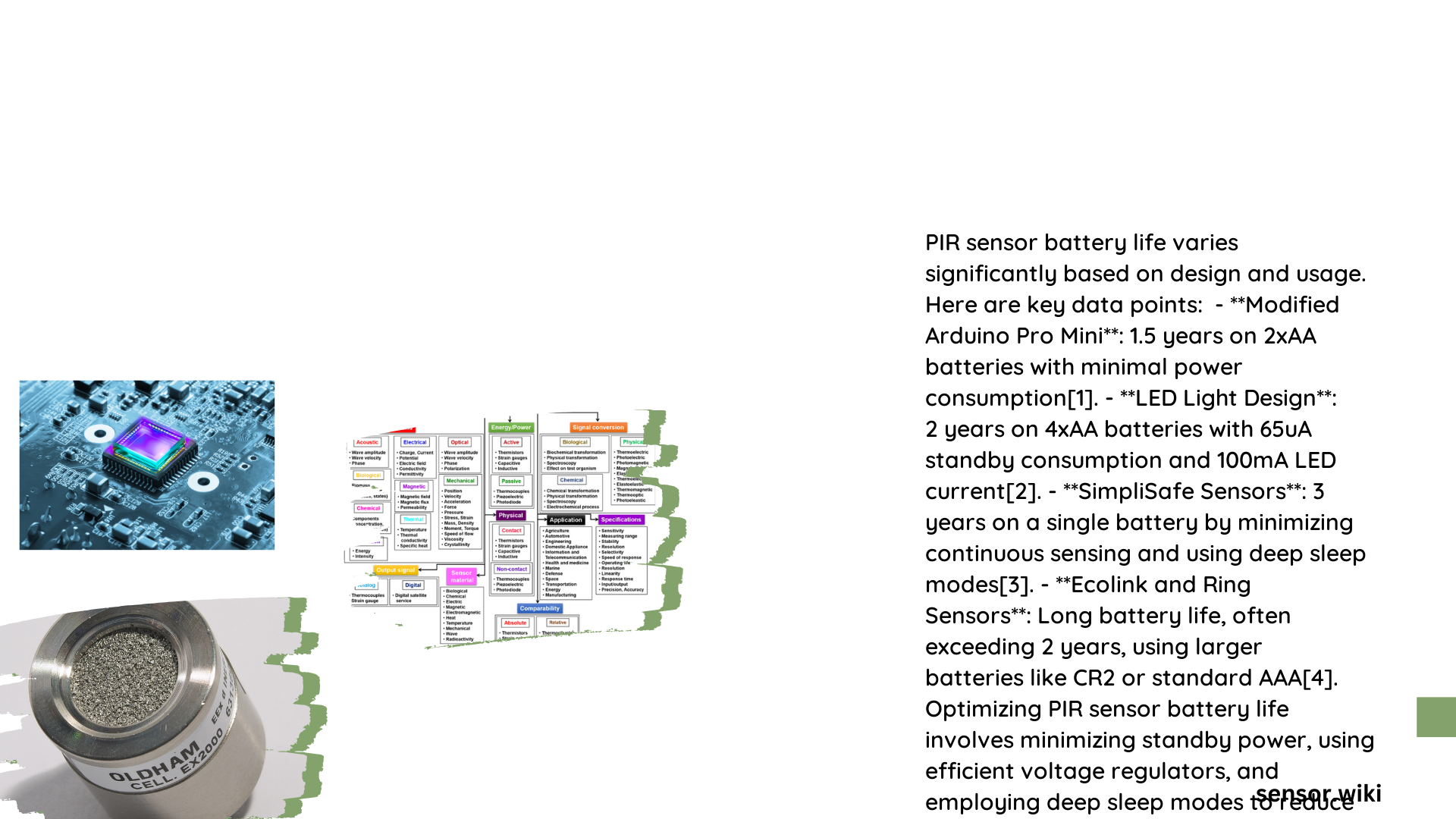PIR sensor battery life represents a critical performance metric for motion detection systems, determining the operational longevity and reliability of wireless security, home automation, and environmental monitoring applications. Understanding the intricate factors influencing battery duration—such as current draw, detection frequency, ambient temperature, and power management strategies—enables engineers and hobbyists to design more efficient and sustainable sensor deployments across various technological ecosystems.
What Determines PIR Sensor Battery Performance?
How Do Current Draw Specifications Impact Battery Duration?
PIR sensors consume power through multiple operational states, significantly influencing overall battery life. The current consumption varies across different modes:
- Standby Mode: Typically 45-50 µA
- Active Detection Mode: Approximately 20-25 mA
- Transmission Mode: 11-15 mA
Battery Life Calculation Example
| Battery Type | Capacity | Average Current | Estimated Duration |
|---|---|---|---|
| CR2032 | 225 mAh | 50 µA | ~4500 hours |
| 9V Battery | 500 mAh | 5 mA | ~100 hours |
| AA Battery | 2500 mAh | 5 mA | ~500 hours |
What Factors Reduce PIR Sensor Battery Efficiency?
Several critical factors can diminish battery performance:
- Ambient Temperature Variations
- High temperatures accelerate battery discharge
- Low temperatures reduce chemical reaction efficiency
-
Optimal operating range: 20-25°C
-
Motion Detection Frequency
- More frequent triggers increase power consumption
- Each detection cycle consumes significant energy
-
Recommended: Less than 30 triggers per day for extended life
-
Additional Power Consumers
- LED indicators
- Wireless transmission modules
- Microcontroller processing
How Can You Optimize PIR Sensor Battery Life?
Recommended Power Management Strategies
- Implement deep sleep modes
- Use low-power microcontrollers
- Select appropriate battery chemistry
- Minimize wireless transmission frequency
- Optimize sensor sensitivity settings
Which Battery Types Perform Best?
| Battery Type | Capacity | Typical Lifespan | Pros | Cons |
|---|---|---|---|---|
| Li-SOCl2 | 1650 mAh | 3-4 years | High energy density | Higher cost |
| Alkaline | 1000 mAh | 1-2 years | Low cost | Limited low-temperature performance |
| Lithium | 1200 mAh | 2-3 years | Stable voltage | More expensive |
What Are Advanced Power Optimization Techniques?
- Adaptive Sampling
- Dynamic adjustment of detection intervals
-
Reduce unnecessary power consumption
-
Energy Harvesting
- Solar-powered PIR modules
- Kinetic energy conversion
- Reduce battery dependency
Practical Implementation Recommendations

- Choose batteries with high energy density
- Design circuits with minimal quiescent current
- Implement intelligent power management algorithms
- Regularly calibrate and maintain sensor systems
Conclusion Insights
Maximizing PIR sensor battery life requires a holistic approach combining hardware selection, intelligent design, and strategic power management techniques.
